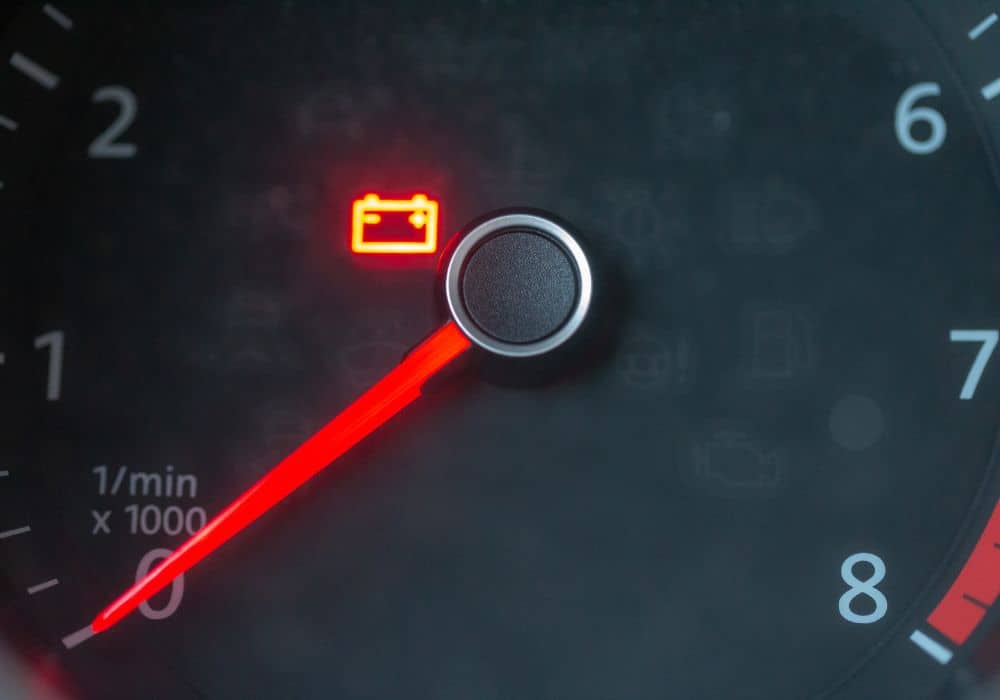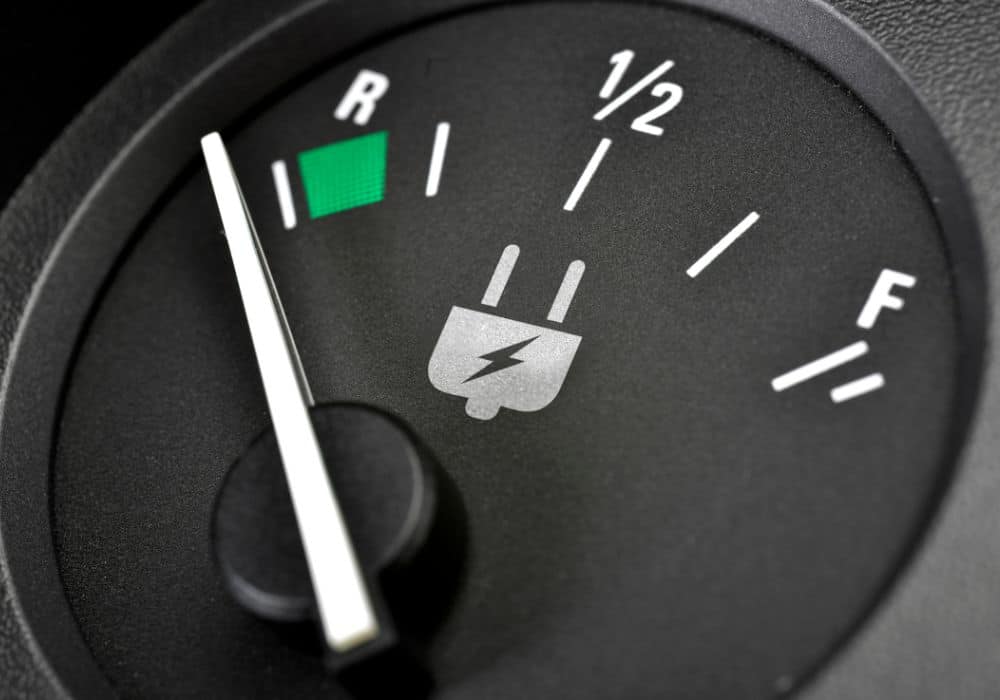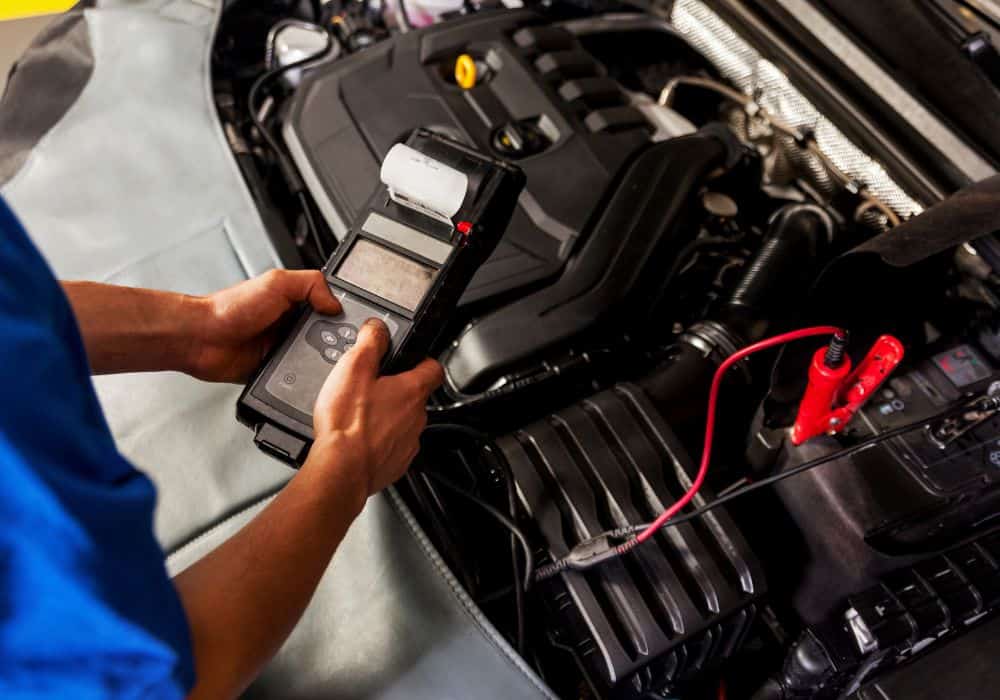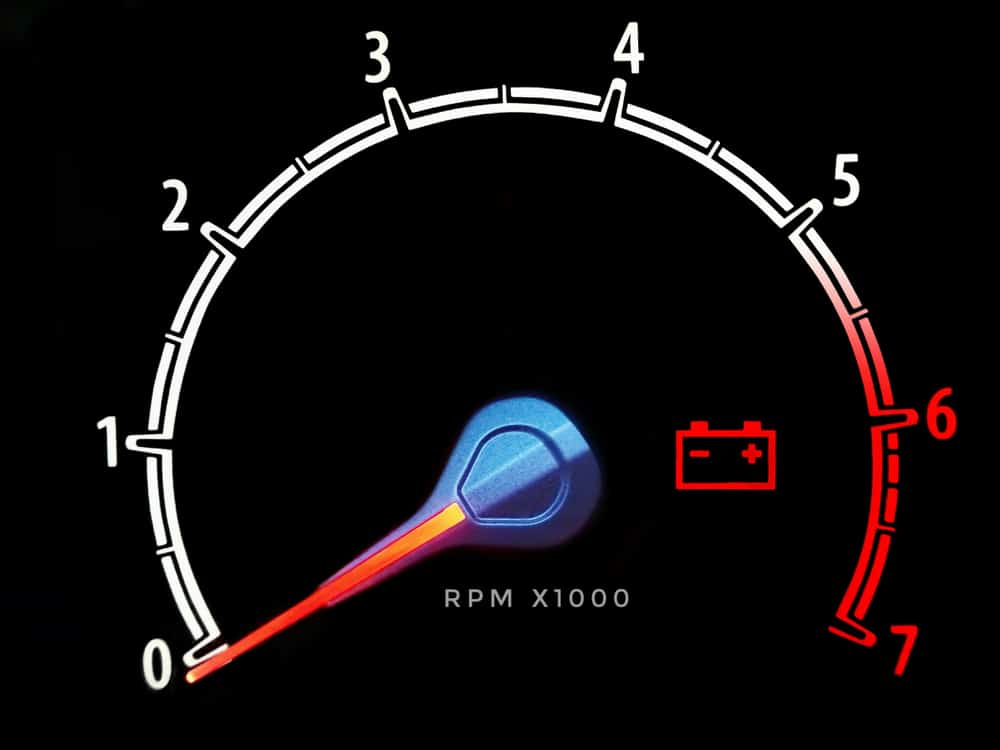Your car has plenty of features that focus on keeping you safe and informed, including a mess of gauges located right on your dash. In most situations, we don’t bother to check anything other than the fuel gauge or speedometer and just assume everything is operating well.
Sometimes, we run into issues or notice a certain needle is sitting outside of its normal. This is usually the case with monitoring systems like your car’s battery voltage gauge.
This article explains what the battery gauge is, what it measures, where the needle should be, and why that is important. We also touch on some issues that may cause the needle to sit somewhere else and how you can fix those issues.
Table of Contents
Car Battery Gauge Basics
All the gauges on the dashboard of your car are diagnostic tools that help you monitor vehicle or component performance. Some of these, like the speedometer, are essential for daily use.
Others, like the temperature gauge or the battery gauge, usually travel the same route every time you use the car. These parts have a normal operating range, so a routine performance is exactly what you want.
Understanding what the car’s battery gauge measures can help you catch issues early on and diagnose any problems if the needle travels out of that range.
What It Measures?
A car’s battery indicator is usually a voltmeter that measures the condition of your car battery as you use it.
Voltage refers to the electrical potential of the electricity in your battery. A car battery must have a certain potential energy, usually 12.0 volts, to operate safely and properly, and the voltmeter reading tells you where the voltage sits.
In some cars, usually older vehicles, the battery indicator is instead an ammeter gauge. While a voltmeter measures the potential energy of the battery, an ammeter gauge measures the electrical current in amps.

These worked well in the past, but newer technology (specifically modern alternators) has made them obsolete.
Some cars don’t have a battery gauge at all, but they still monitor the vehicle’s electrical system. Instead, these vehicles only inform you of battery condition if there’s a problem, usually with a small picture of a battery or a specific error message.
Where the Needle Should Be on the Battery Gauge?
In most monitoring gauges, the normal position of the needle is in the middle of the gauge. This allows plenty of room for measurement and helps you notice any issues early on.
A battery gauge may not be labeled, but some provide numbers so you can determine what voltage or current the car is reading.
Normal ranges include:
- Idle voltage: 12 to 12.6 volts
- Running voltage: 13.7 to 14.7 volts
- Ammeter reading: settles around 0 amps (usually closer to 1 to 3 amps)
Your vehicle manual may have more information on what is normal for your specific make, model, and year.
The Importance of the Car Battery Gauge
Your battery gauge and subsequent monitoring system help you keep an eye on an integral part of vehicle operation. A 12-volt battery that isn’t working properly might leave you stranded, and prolonged issues can damage other electrical components.
Slight jumps or dips on your car battery gauge might warn you of issues such as:
- Charging system failure
- Low voltage problems
- Wiring problems
In some cases, the gauge is the first indicator of an issue and reads abnormal battery performance before any symptoms pop up.
How to Read Battery Condition from Your Car’s Dashboard?

To check your battery gauge properly:
- Get in your vehicle with the car off.
- Insert your key in the ignition, and turn it on partially (usually to the accessory position).
- Look at the battery gauge and ensure it’s reading normally (around 12.0 volts without turning the car over).
- Check the battery gauge again when your vehicle is running (it should jump up around 14.0 volts after running for a few minutes).
You check an ammeter gauge the same way, but it acts differently. The ammeter gauge should read a current of 0 when you enter the vehicle. This will decrease when you start the car, then jump up above 0 to show the battery is charging.
Ammeters usually settle down around 1 to 3 amps after running for 5 minutes, but they will drop as other electrical components turn on. A slightly positive reading is normal, but a negative reading indicates an insufficient current.
Dealing With Electrical Issues Detected by the Battery Gauge
In this section, we look at how your battery gauge can warn you of electrical issues, other symptoms to look for, and what your solution looks like.
The most common issues include:
- A parasitic draw
- Overcharging
- Insufficient charging
- Low oil
Dealing with these issues early on is important to preserve battery condition and prevent further complications.
1. Parasitic Draw (Low Needle/ Dead Battery)

Parasitic draw happens when a certain electrical component is taking power when it isn’t supposed to. Your battery can handle a small draw, usually around 50 milliamps, to preserve clock memory, radio presets, and your security system.
When other devices are drawing power at the wrong time, they pull from your battery’s charge while it isn’t in use. It may survive until your next drive, leaving you with a low needle, but most batteries drain before you can use them again.
If you suspect parasitic draw:
- Connect a multimeter to your car battery while it is off. It should not read a draw greater than 50 milliamps (75 milliamps for some newer vehicles).
- If the draw is too great, keep the multimeter connected and locate your fuse box.
- Pull each fuse individually while monitoring the multimeter. If the current drops when you pull a fuse, determine what system that fuse relates to.
In some cases, the fuse may connect to multiple devices and you will need further diagnostics to determine the actual cause. Replacing the broken part should get rid of the parasitic draw.
2. Overcharging (High Needle)
A high needle, on both a voltmeter and an ammeter, indicates that the battery is overcharged. This may seem like you’re just getting extra juice to burn through, but it actually fries the internal and external components of the battery.
Overcharging usually indicates a faulty voltage regulator (the part that controls the voltage of the charge from the alternator) or its related circuits.
Other symptoms include:
- Fluctuating charge (will also drop the needle low)
- Flickering or dimming lights
- Erratic engine performance
- Burned out lights
You can test the voltage regulator on your own with a voltmeter or multimeter, or a mechanic can do this for you. You will need to replace the part to fix the issue.
3. Insufficient Charging (Low Needle/ Dead Battery)
A faulty voltage regulator can cause insufficient charging, but this problem also happens when parts in your charging system (usually your alternator, serpentine belt, or tensioner pulley go out.
A bad charging system cannot keep your car running, and it will usually die again after you jump it and remove the external power source.
For further testing:
- Alternator: Set your multimeter to DCV above 15, then connect it to your alternator. It should read 12.6 V while your vehicle is off. This should jump between 13.7 and 14.7 while running (to match your battery).
- Serpentine belt: A bad serpentine belt may wine while operating. There are also obvious physical signs, such as cracking or wear along the sides of the belt.
- Tensioner pulley: Bad tensioner pulleys may cause the belt to be too tight or too loose. They’re also known to squeak, squeal, or grind, usually when the engine first starts.
Replace any faulty parts to ensure your battery gets the charge it needs.
4. Low Oil (Low Needle)

While low oil is not the most likely cause of a battery issue, it prevents your car from the lubrication it needs to generate power for charging the battery.
Make sure you change your oil and oil filter as recommended (this varies depending on the type of oil you use). You should also check your car regularly for any leaks, and fix these issues as they arise.
Does the Battery Gauge Reflect Battery Age?
The battery gauge does not relate specifically to age, but it’s not uncommon to notice the needle drop lower the older your battery gets.
As car batteries age, their internal components become less effective at charging the battery and holding a charge. They lose both capacity and capability, and you will eventually need to replace the battery for safe operation.
Follow the recommended schedule for your battery and replace your battery every 3 to 5 years.
Conclusion
Most car battery gauges are easy to read, and they note the normal range in which the needle should sit. Understanding what this measurement means and how you can use it to pick up on issues only makes you a better car owner.
Remember to deal with any electrical issues as they pop up. On top of the anxiety of the gauge reminding you of the issue, electrical problems have a tendency to affect different components the longer they persist.
Are you having car battery issues or trying to figure out what your gauge is telling you? Comment below!
